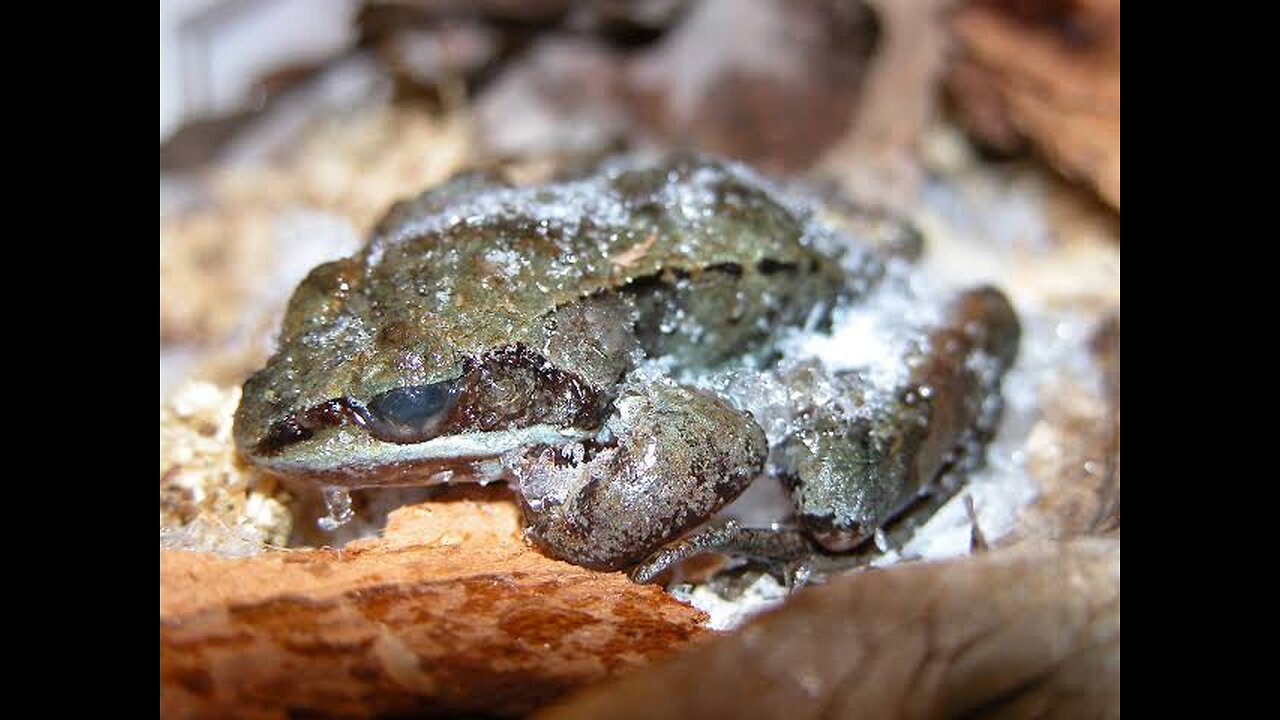Premium Only Content

"How Wood Frogs Survive Being Frozen Alive: Nature's Incredible Adaptation"
The wood frog (Rana sylvatica) has a remarkable ability to survive being frozen during the winter. This amphibian's unique adaptation allows it to tolerate the formation of ice within its body. Here's how it works:
Cryoprotectants Production: When temperatures drop, the wood frog's liver produces large amounts of glucose and urea. These substances act as natural antifreeze agents, protecting the frog's cells and tissues from damage.
Controlled Freezing: Ice formation starts in the body cavities and under the skin, while the vital organs remain unfrozen. The frog’s heart stops beating, and its breathing and metabolic processes come to a halt.
Dehydration: As the extracellular fluids freeze, water is drawn out of the cells to prevent ice crystals from forming inside them, which would otherwise cause lethal damage.
Thawing Process: In spring, the wood frog thaws gradually. Its heart and other organs resume their functions without damage, allowing the frog to become active again.
This adaptation enables the wood frog to survive in harsh climates where temperatures can drop well below freezing.
#WoodFrog #Nature #Adaptation #FrozenAlive #Wildlife #Amphibians #SurvivalSkills #Cryoprotectants #AnimalAdaptations #WildlifeWonders
#WoodFrog #FrozenFrog #Survival #Nature #Wildlife #Adaptation #Cryoprotectants #WinterSurvival #AnimalBehavior #WildlifeVideo #Animals #Wildlife #Nature #AnimalBehavior #WildlifePhotography #AnimalKingdom #WildlifeLovers #NatureLovers #AnimalVideos #WildlifeConservation #cute #facts #amazing #trending #rumble #rumblebros #readytorumble #viral #turbo #boost
-
 59:32
59:32
Sean Unpaved
3 hours agoNasty Boy Unleashed: World Series Champ Rob Dibble Unloads on the MLB & Trade Deadline
16K -
 LIVE
LIVE
Lara Logan
13 hours agoLAWFARE UNDER FIRE: Treniss Evans Leading the Charge Against a Weaponized Justice System | Ep 29
569 watching -
 5:56:35
5:56:35
JuicyJohns
7 hours ago $2.76 earned🟢#1 REBIRTH PLAYER 10.2+ KD🟢$500 GIVEAWAY SATURDAY!
55K1 -
 15:32
15:32
Scammer Payback
6 hours agoTormenting the Scammer Who Did This
2.95K19 -
 17:28
17:28
IsaacButterfield
10 hours ago $0.35 earnedThe Government Just Banned Free Speech in the UK
3.99K8 -
 2:01:46
2:01:46
Tim Pool
20 hours agoIs Trump Still Winning? | The Culture War LIVE Debate
167K256 -
 5:22
5:22
Michael Heaver
14 hours agoBritain's Enraged Voters Reject EXTREME Agenda
11.9K9 -
 1:13:41
1:13:41
Rebel News
3 hours agoNo trade deal for Carney, Christian cancelled in BC Bible Belt, Liberal bail reform | Rebel Roundup
15.2K8 -
 1:00:18
1:00:18
The Drew Allen Show on DailyClout
2 hours ago"Russiagate Is ‘Crime of the Century’"
10.5K2 -
 1:20:41
1:20:41
Steven Crowder
6 hours agoBill Burr Flames Out on Conservatives, Whites, and... Ben Shapiro
227K160